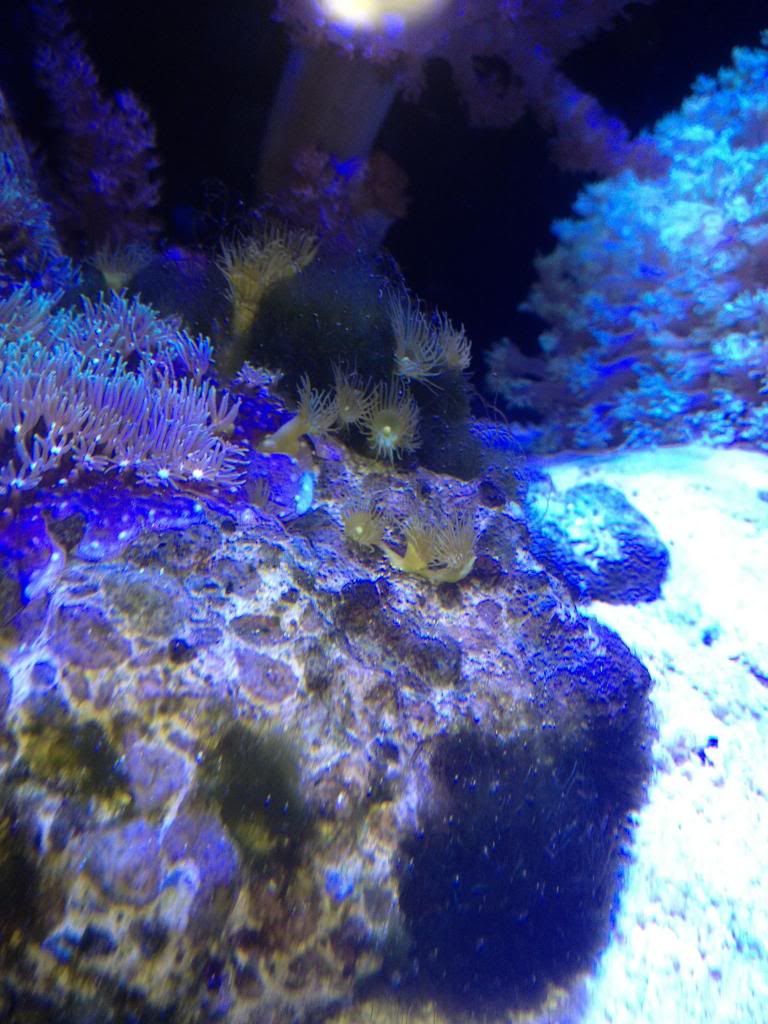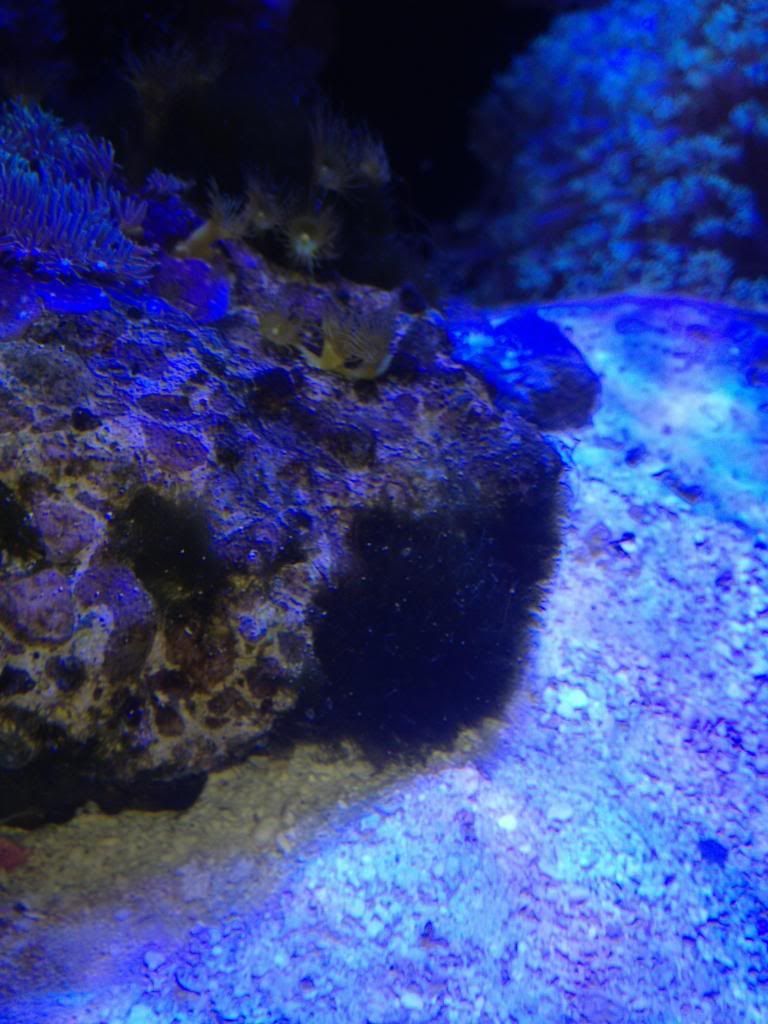Pawlu
Member
My tank 38Gallon Nuvo has been running for approx 7 months now , and over the last month or so I started having problems with Red Slime Cyno and Green Hair Algae (sometimes brown looking). I know the main causes for algae outbreaks so to mention a few things up front: tank is not overstocked, or overfed in any way. In fact in it understocked! Water changes are done every 2 weeks 15% with an overflow cleanup weekly. Water changes are done with RO water only, always using the same salt mixes. Water parameters are the same as always with the exception that due to the summer my average tank temp is 2degrees warmer. I also put fresh Pura Phoslock every month in the overflow, and recently doubled the dosage of it.
The red slime algae appears to be killing off my montipora, at one point it would appear in a matter of hours carpeting the bottom of the tank, now it tends to stick to coral and small areas on the rock. The GHA comes and goes but has recently started to choke out a group of Yellow Star Polyps for me.
I would like some advice on how to best start tackling this issue, here are a few of the culprits which I believe could be causing the issue of too many nutrients:
1) My Protein skimmer is a cheap basic air driven model (CombiSkim (Wattronix) CS218) and it takes nearly 2 weeks for it to get full, when it does its a liquid skim with some froth.
2) The stock water pump does not have the power it use to have and the water going through the overflow has reduced by at least 30 to 40% over the last few months.
3) I use filter foam in the overflow that I wash out weekly and replace every 2 weeks.
4) My Lighting is too strong (see my AI Sol configuration below), although as mentioned this was not an issue for 4 months, the outbreak started pretty much as the house warmed up in summer.
For a link to the build thread of my tank please go here: http://www.reefsanctuary.com/forums...e-marine-nano-reef-project-4.html#post1162586
Here are some pics of the GHA and Red Slime Cyno
Red Slime on Montipora:

GHA



My Sol Settings:

Thanks for any input and help.
The red slime algae appears to be killing off my montipora, at one point it would appear in a matter of hours carpeting the bottom of the tank, now it tends to stick to coral and small areas on the rock. The GHA comes and goes but has recently started to choke out a group of Yellow Star Polyps for me.
I would like some advice on how to best start tackling this issue, here are a few of the culprits which I believe could be causing the issue of too many nutrients:
1) My Protein skimmer is a cheap basic air driven model (CombiSkim (Wattronix) CS218) and it takes nearly 2 weeks for it to get full, when it does its a liquid skim with some froth.
2) The stock water pump does not have the power it use to have and the water going through the overflow has reduced by at least 30 to 40% over the last few months.
3) I use filter foam in the overflow that I wash out weekly and replace every 2 weeks.
4) My Lighting is too strong (see my AI Sol configuration below), although as mentioned this was not an issue for 4 months, the outbreak started pretty much as the house warmed up in summer.
For a link to the build thread of my tank please go here: http://www.reefsanctuary.com/forums...e-marine-nano-reef-project-4.html#post1162586
Here are some pics of the GHA and Red Slime Cyno
Red Slime on Montipora:

GHA



My Sol Settings:

Thanks for any input and help.
